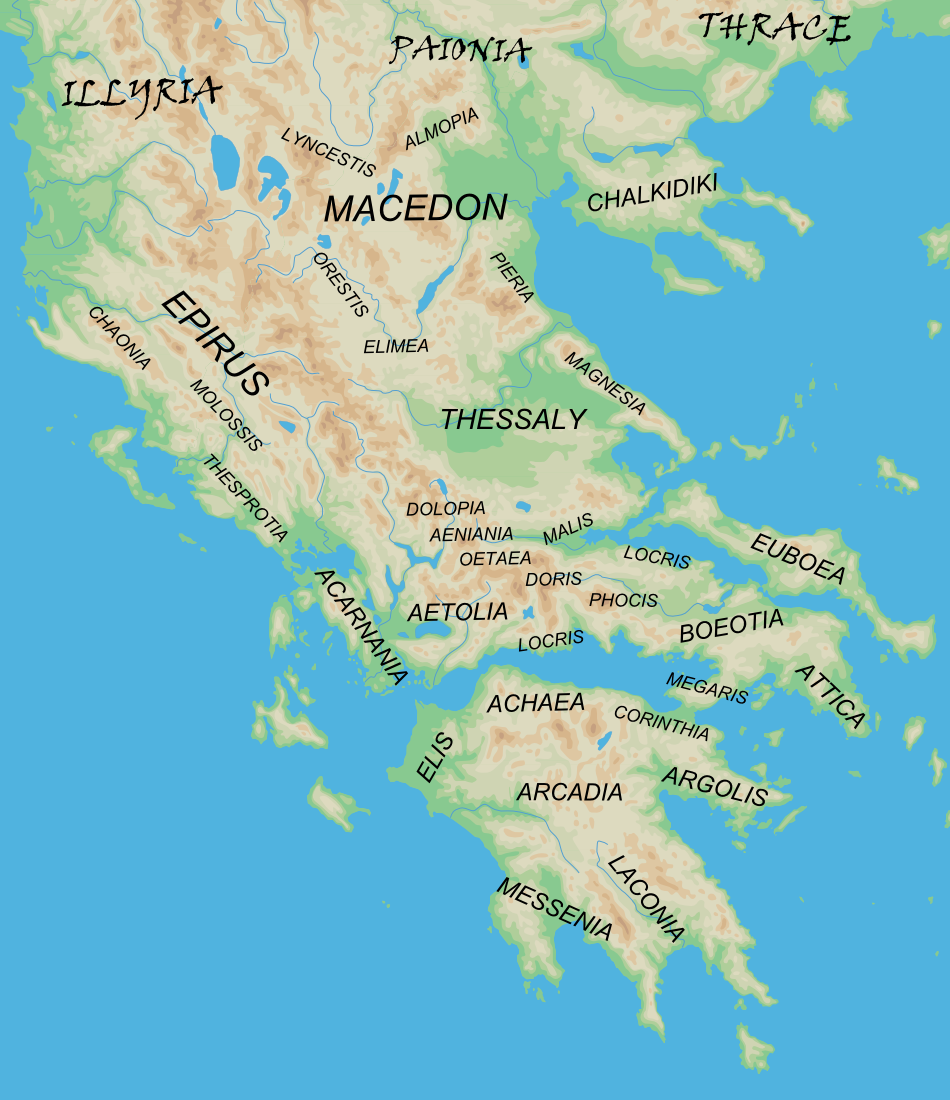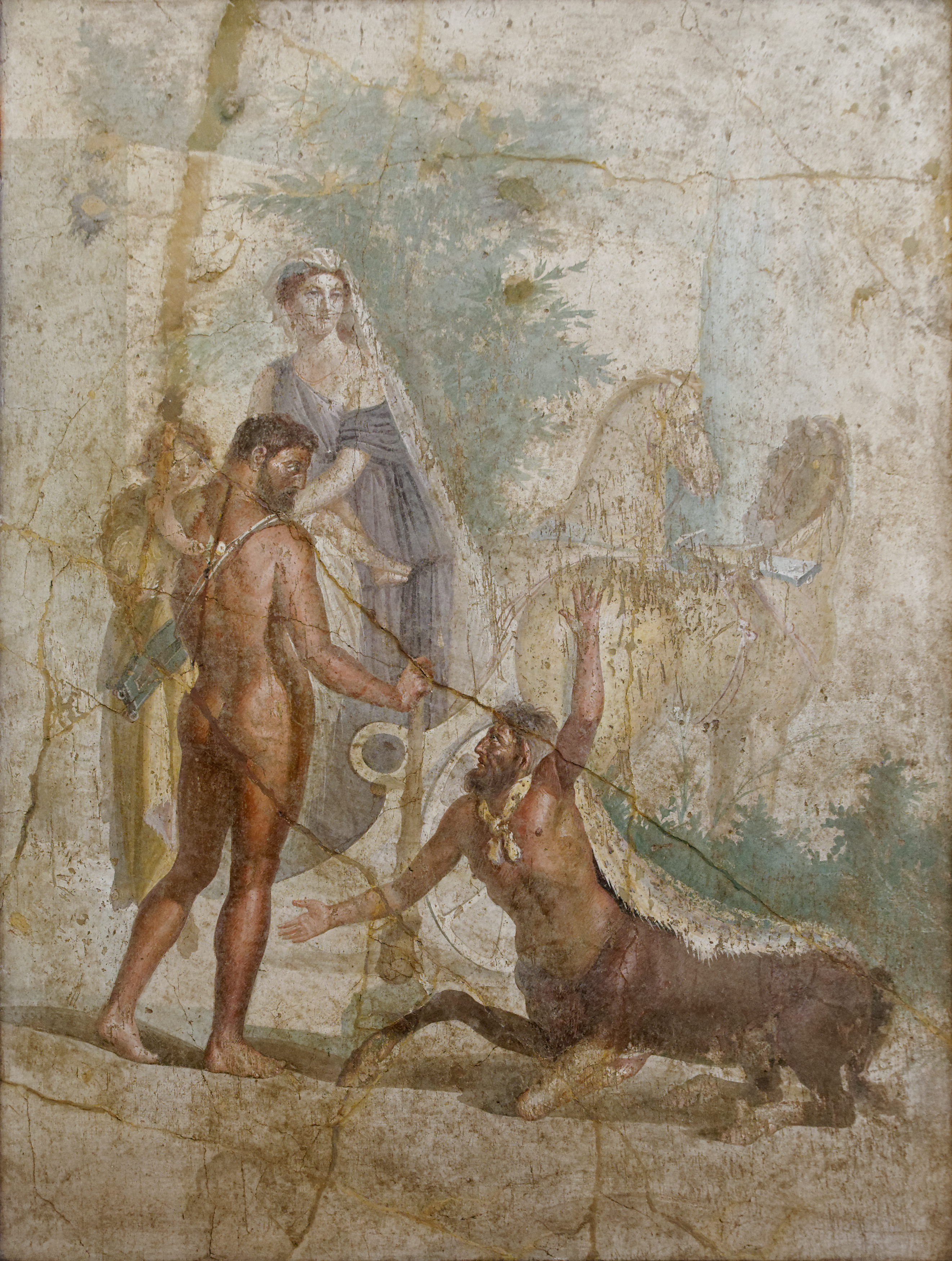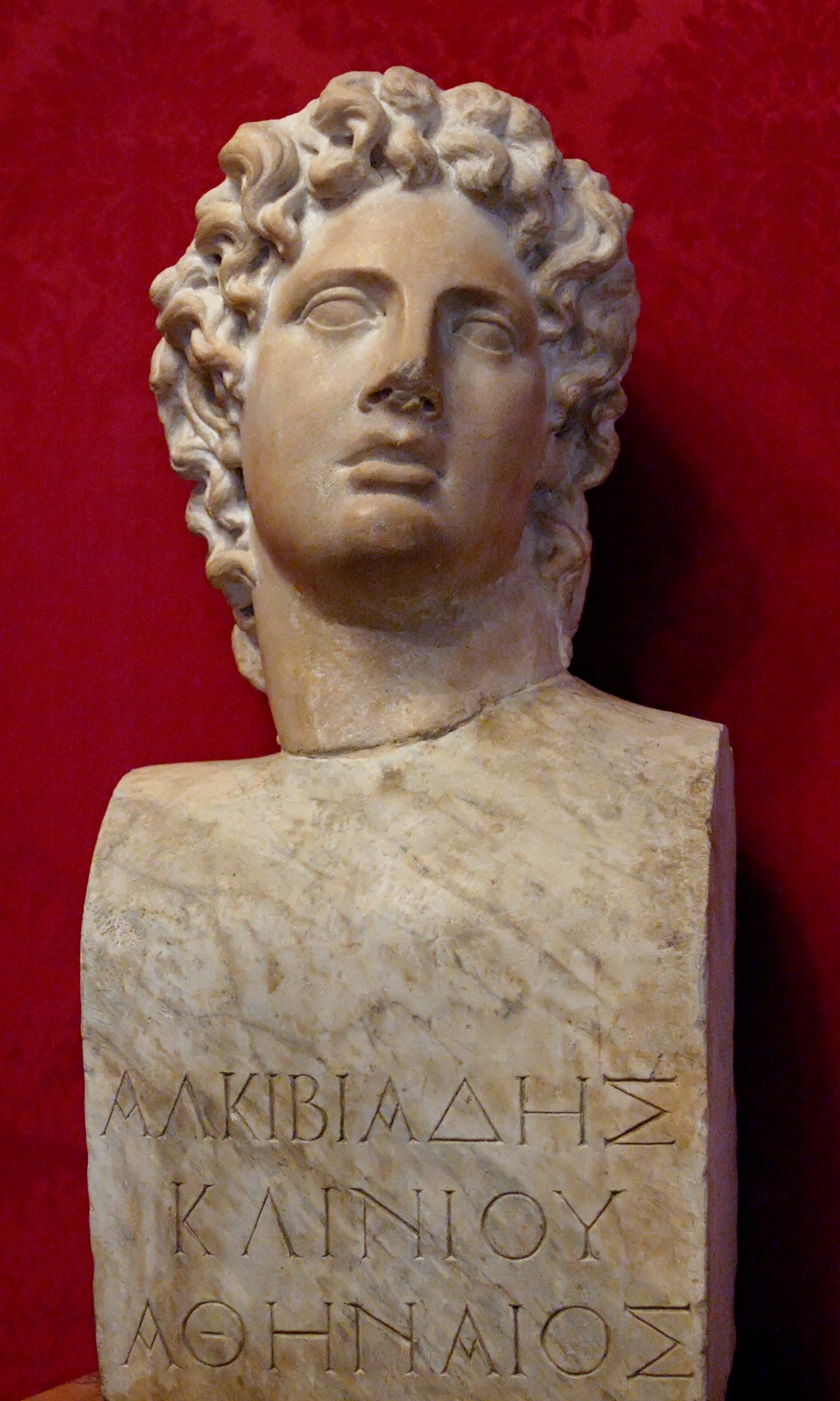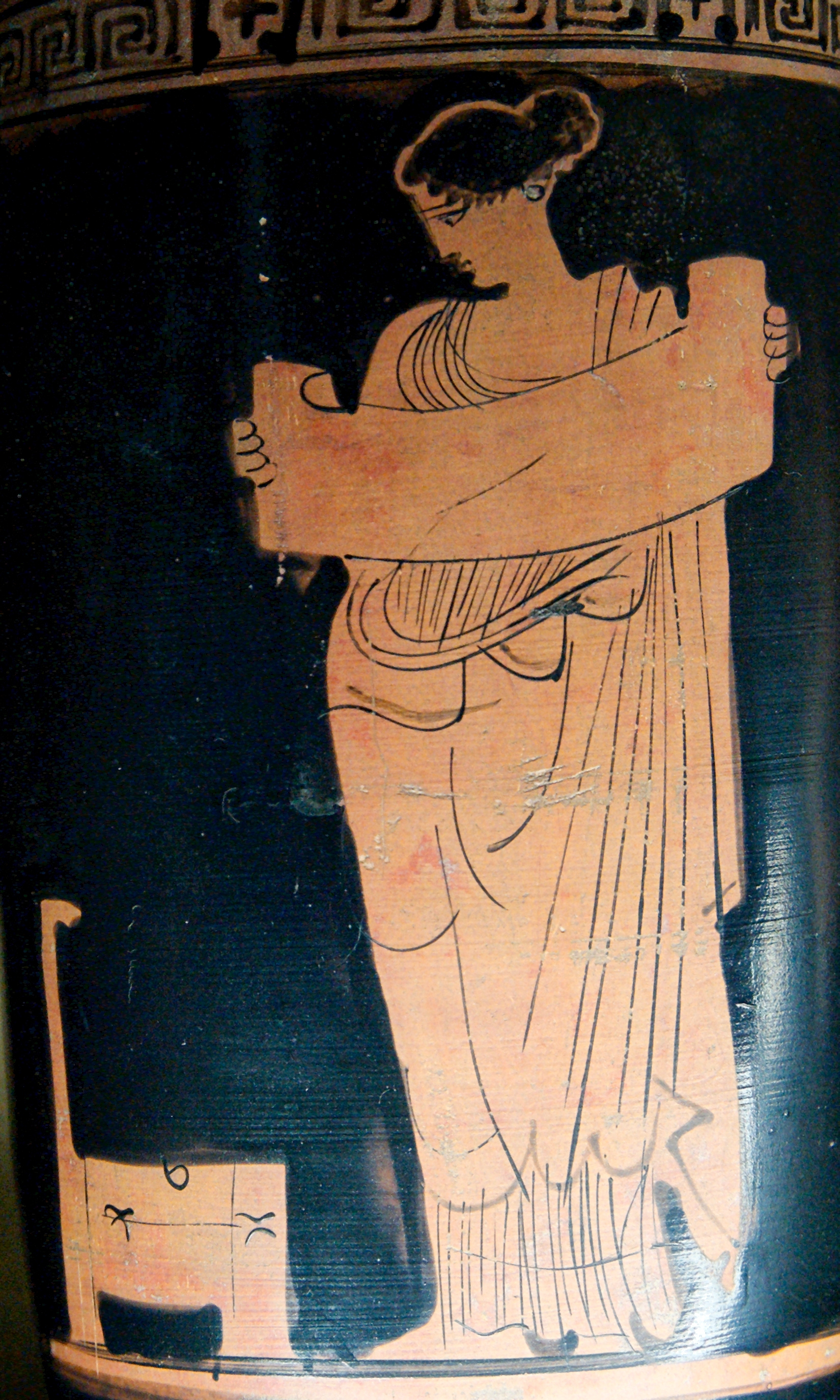|
Teithras
Teithras () or Tithras (Τίθρας) was a deme of ancient Attica, of the ''phyle'' of Aegeis, sending four delegates to the Athenian Boule. As evidenced by the discovery of a sacred calendar, the deme revered Athena, Zeus, Heracles, Kore, and the heroes Datylus and Teithras. There was also a sanctuary of Dionysus, in which theatrical performances took place. In ancient times the dried figs produced in this deme were famous. In ''The Frogs'' by Aristophanes, the "Gorgons of Teithras" are characters invented by Aeacus to scare Dionysus. The playwright probably referred to the women of the deme, who were considered terrible and ugly by contemporary Athenians. Its site is located near modern Pikermi Pikermi () is a suburb of Athens and a former community of East Attica regional unit, Greece. Since the 2011 local government reform it is part of the municipality Rafina-Pikermi, of which it is a municipal unit. The municipal unit has an area of .... References Populated plac ... [...More Info...] [...Related Items...] OR: [Wikipedia] [Google] [Baidu] |
Deme
In Ancient Greece, a deme or (, plural: ''demoi'', δήμοι) was a suburb or a subdivision of Classical Athens, Athens and other city-states. Demes as simple subdivisions of land in the countryside existed in the 6th century BC and earlier, but did not acquire particular significance until the reforms of Cleisthenes in 508 BC. In those reforms, enrollment in the citizen-lists of a deme became the requirement for citizenship; prior to that time, citizenship had been based on membership in a phratry, or family group. At this same time, demes were established in the main city of Athens itself, where they had not previously existed; in all, at the end of Cleisthenes' reforms, Classical Athens, Athens was divided into 139 demes., Three other demes were created subsequently: Berenikidai (224/223 BC), Apollonieis (201/200 BC), and Antinoeis (AD 126/127). The establishment of demes as the fundamental units of the state weakened the ''genos, gene'', or aristocratic family groups, that ... [...More Info...] [...Related Items...] OR: [Wikipedia] [Google] [Baidu] |
Ancient Attica
The regions of ancient Greece were sub-divisions of the Hellenic world as conceived by the ancient Greeks, shown by their presence in the works of ancient historians and geographers or in surviving legends and myths. Conceptually, there is no clear theme to the structure of these regions. Some, particularly in the Peloponnese, can be seen primarily as distinct geo-physical units, defined by physical boundaries such as mountain ranges and rivers. Conversely, the division of central Greece between Boeotia, Phocis, Doris and the three parts of Locris, seems to be attributable to ancient tribal divisions and not major geographical features. Both types of regions retained their identity throughout the Greek Dark Ages and its tumultuous changes in the local population and culture, giving them a less political and more symbolic presence. Other geographical divisions not identified with the aforementioned areas did, however, change over time, suggesting a closer connection with tri ... [...More Info...] [...Related Items...] OR: [Wikipedia] [Google] [Baidu] |
Phyle
''Phyle'' (, ; pl. ''phylai'', ; derived from Greek , ''phyesthai'' ) is an ancient Greek term for tribe or clan. Members of the same ''phyle'' were known as ''symphyletai'' () meaning 'fellow tribesmen'. During the late 6th century BC, Cleisthenes organized the population of Athens in ten ''phylai'' (tribes), each consisting of three ''trittyes'' ("thirtieths"), with each ''trittys'' comprising a number of demes. Tribes and demes had their own officers and were self-administered. Some ''phylai'' can be classified by their geographic location, such as the Geleontes, the Argadeis, the Hopletes, and the Agikoreis in Ionia, as well as the Hylleans, the Pamphyles, the Dymanes in Doris. Attic tribes First period The best-attested new system was that created by Cleisthenes for Attica in or just after 508 BC. The landscape was regarded as comprising three zones: urban ('' asty''), coastal ('' paralia'') and inland ('' mesogeia''). Each zone was split into ten sections called ... [...More Info...] [...Related Items...] OR: [Wikipedia] [Google] [Baidu] |
Aegeis
Aigeis () was a tribe (phyle) of Ancient Athens which contained twenty demes: Lower and Upper Ankyle, Araphen, Bate, Diomeia, Erchia, Erikeia, Gargettos, Halae Araphenides, Hestiaia, Ikarion, Ionidai, Kollytos, Kolonos, Kydantidai, Myrrhinoutta, Otryne, Phegaia, Philaidai, Plotheia. It was named for the legendary king Aegeus. The quota of demes for Aigeis showed the greatest variety of all the phyles during the first and second periods (343–253 BC) of bouleutic government. Of the deme Ankylē, an individual is known, Polystratos, who owned land within that deme. An individual named Hagnias II had an estate within the deme Araphen.(ed. additional sources on Hagnias and descendants (Bouselos) Molly Broadbent - Studies in Greek Genealogy Erchia, Ikarion, Phegaia were some of the larger demes of the tribe. References {{Reflist Ancient tribes in Attica ... [...More Info...] [...Related Items...] OR: [Wikipedia] [Google] [Baidu] |
Athena
Athena or Athene, often given the epithet Pallas, is an ancient Greek religion, ancient Greek goddess associated with wisdom, warfare, and handicraft who was later syncretism, syncretized with the Roman goddess Minerva. Athena was regarded as the patron and protectress of various cities across Greece, particularly the city of Athens, from which she most likely received her name. The Parthenon on the Acropolis of Athens is dedicated to her. Her major symbols include Owl of Athena, owls, olive trees, snakes, and the Gorgoneion. In art, she is generally depicted wearing a helmet and holding a spear. From her origin as an Aegean tutelary deity, palace goddess, Athena was closely associated with the city. She was known as ''Polias'' and ''Poliouchos'' (both derived from ''polis'', meaning "city-state"), and her temples were usually located atop the fortified acropolis in the central part of the city. The Parthenon on the Athenian Acropolis is dedicated to her, along with numero ... [...More Info...] [...Related Items...] OR: [Wikipedia] [Google] [Baidu] |
Zeus
Zeus (, ) is the chief deity of the List of Greek deities, Greek pantheon. He is a sky father, sky and thunder god in ancient Greek religion and Greek mythology, mythology, who rules as king of the gods on Mount Olympus. Zeus is the child of Cronus and Rhea (mythology), Rhea, the youngest of his siblings to be born, though sometimes reckoned the eldest as the others required disgorging from Cronus's stomach. In most traditions, he is married to Hera, by whom he is usually said to have fathered Ares, Eileithyia, Hebe (mythology), Hebe, and Hephaestus.Hard 2004p. 79 At the oracle of Dodona, his consort was said to be Dione (Titaness/Oceanid), Dione, by whom the ''Iliad'' states that he fathered Aphrodite. According to the ''Theogony'', Zeus's first wife was Metis (mythology), Metis, by whom he had Athena.Hesiod, ''Theogony'886900 Zeus was also infamous for his erotic escapades. These resulted in many divine and heroic offspring, including Apollo, Artemis, Hermes, Persephone, D ... [...More Info...] [...Related Items...] OR: [Wikipedia] [Google] [Baidu] |
Heracles
Heracles ( ; ), born Alcaeus (, ''Alkaios'') or Alcides (, ''Alkeidēs''), was a Divinity, divine hero in Greek mythology, the son of ZeusApollodorus1.9.16/ref> and Alcmene, and the foster son of Amphitryon.By his adoptive descent through Amphitryon, Heracles receives the epithet Alcides, as "of the line of Alcaeus (mythology), Alcaeus", father of Amphitryon. Amphitryon's own, mortal son was Iphicles. He was a descendant and half-brother (as they are both sired by the god Zeus) of Perseus. He was the greatest of the Greek heroes, the ancestor of royal clans who claimed to be Heracleidae (), and a champion of the Twelve Olympians, Olympian order against chthonic monsters. In Roman mythology, Rome and the modernity, modern western world, West, he is known as Hercules, with whom the later Roman emperors, in particular Commodus and Maximian, often identified themselves. Details of his cult (religion), cult were adapted to Rome as well. Origin Many popular stories were told ... [...More Info...] [...Related Items...] OR: [Wikipedia] [Google] [Baidu] |
Persephone
In ancient Greek mythology and Ancient Greek religion, religion, Persephone ( ; , classical pronunciation: ), also called Kore ( ; ) or Cora, is the daughter of Zeus and Demeter. She became the queen of the Greek underworld, underworld after her abduction by her uncle Hades, the king of the underworld, who would later take her into marriage. The myth of her abduction, her sojourn in the underworld, and her cyclical return to the surface represents her functions as the embodiment of spring and the personification of vegetation, especially grain crops, which disappear into the earth when sown, sprout from the earth in spring, and are harvested when fully grown. In Art in ancient Greece, Classical Greek art, Persephone is invariably portrayed robed, often carrying a wikt:sheaf, sheaf of grain. She may appear as a mystical divinity with a sceptre and a little box, but she was mostly represented in the process of being carried off by Hades. Persephone, as a vegetation deity, veg ... [...More Info...] [...Related Items...] OR: [Wikipedia] [Google] [Baidu] |
Dionysus
In ancient Greek religion and Greek mythology, myth, Dionysus (; ) is the god of wine-making, orchards and fruit, vegetation, fertility, festivity, insanity, ritual madness, religious ecstasy, and theatre. He was also known as Bacchus ( or ; ) by the Greeks (a name later adopted by the Ancient Rome, Romans) for a frenzy he is said to induce called ''baccheia''. His wine, music, and ecstatic dance were considered to free his followers from self-conscious fear and care, and subvert the oppressive restraints of the powerful. His ''thyrsus'', a fennel-stem sceptre, sometimes wound with ivy and dripping with honey, is both a beneficent wand and a weapon used to destroy those who oppose his Cult of Dionysus, cult and the freedoms he represents. Those who partake of his mysteries are believed to become possessed and empowered by the god himself. His origins are uncertain, and his cults took many forms; some are described by ancient sources as Thrace, Thracian, others as Greek. In O ... [...More Info...] [...Related Items...] OR: [Wikipedia] [Google] [Baidu] |
The Frogs
''The Frogs'' (; , often abbreviated ''Ran.'' or ''Ra.'') is a comedy written by the Ancient Greek playwright Aristophanes. It was performed at the Lenaia, one of the Festivals of Dionysus in Athens, in 405 BC and received first place. The play features the comical katabasis of the god of theater Dionysus, with his slave Xanthias, in order to revive the late tragedian Euripides. Dionysus is frustrated with tragedy's decline in quality after the playwright's recent passing, and concerned about theatre's future as the city of Athens struggles in the Peloponnesian War. During the pair's journey through the underworld, the god cravenly and unsuccessfully attempts to evade trouble after masquerading as Heracles, still infamous for his prior kidnapping of the guard-dog Cerberus. At the palace of Pluto, Dionysus then adjudicates a fierce debate between Euripides and Aeschylus for the underworld's throne of tragic drama. Aeschylus wins due to his pragmatism, and Dionysus ends up reviv ... [...More Info...] [...Related Items...] OR: [Wikipedia] [Google] [Baidu] |
Aristophanes
Aristophanes (; ; ) was an Ancient Greece, Ancient Greek Ancient Greek comedy, comic playwright from Classical Athens, Athens. He wrote in total forty plays, of which eleven survive virtually complete today. The majority of his surviving plays belong to the genre of comic drama known as Old Comedy and are considered its most valuable examples. Aristophanes' plays were performed at the religious festivals of Athens, mostly the City Dionysia and the Lenaia, and several of them won the first prize in their respective competitions. Also known as "The Father of Comedy" and "the Prince of Ancient Comedy", Aristophanes wrote plays that often dealt with real-life figures, including Euripides and Alcibiades, and contemporary events, such as the Peloponnesian War. He has been said to recreate the life of ancient Athens more convincingly than any other author. His plays are characterized by preposterous premises, explicit language, wordplays, and political satire. His powers of ridicule ... [...More Info...] [...Related Items...] OR: [Wikipedia] [Google] [Baidu] |








